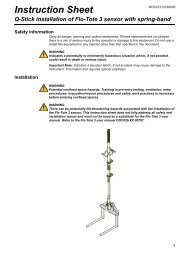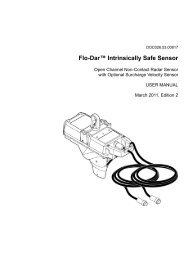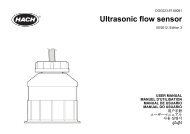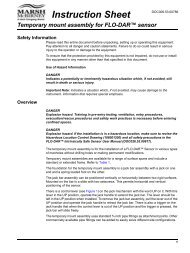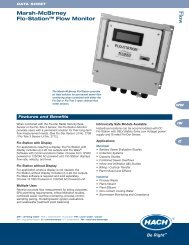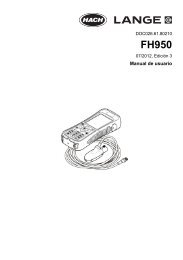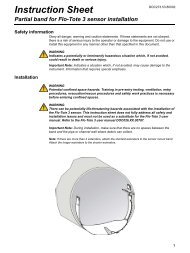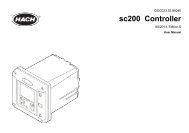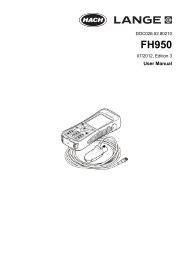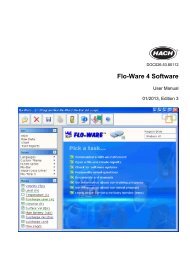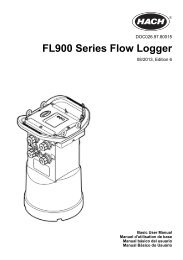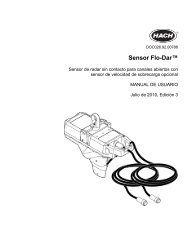Create successful ePaper yourself
Turn your PDF publications into a flip-book with our unique Google optimized e-Paper software.
Maintenance5.1 Preventative maintenance5.2 Cleaning the instrumentExamine the <strong>Flo</strong>-Dar sensor on an annual basis to look for corrosion or damage that canallow environmental gases into the interior. Make sure that no swelling, blistering, pittingor loss of material has occurred on the upper and lower portions of the main plasticenclosure, the depth module or the radome.If the extended depth sensor is used, examine the enclosure and the four ¼-20 SS bolts.If the surcharge velocity sensor (SVS) is used, make sure the unit is not corroded and thelabels are readable. Inspect the cable connectors for any damage or corrosion andtighten all connectors in the system.The only parts of the <strong>Flo</strong>-Dar system that can be replaced by the user are the bailassembly and the cable. If the sensor becomes defective, it must be replaced as acomplete unit.Check the electrical connectionsExamine the cable connectors on an annual basis for corrosion and tightness. Ifcorrosion is found, clean and dry the connectors to make sure that no moisture is on theconnector pins. If corrosion is severe, replace the cables.DANGERExplosion hazard. Never attempt to wipe or clean the <strong>Flo</strong>-Dar or SVS sensor whilein a hazardous location. Do not use abrasives or high-pressure hoses or washersto clean the sensors. Do not disturb the pressure port on the bottom of the sensor.DANGERDanger d'explosion. N'essayez jamais d'essuyer ou de nettoyer le <strong>Flo</strong>-Dar ou lecapteur SVS dans un emplacement dangereux. N'utilisez pas de produits abrasifsou de tuyaux sous pression ou d'appareils de nettoyage pour nettoyer les capteurs.Ne dérangez pas le port sous pression situé dans le bas du capteur.Regular cleaning is not necessary because the sensor does not contact the flow unless asurcharge condition occurs. Examine the sensor after a surcharge to see if cleaning isnecessary.Prerequisites• Retrieval pole with hook (optional, see Accessories on page 37).Procedure:1. Remove power to the sensor.2. Put the hook on the retrieval pole for removal without manhole entry. Make sure thegrounding strap is on the pole.3. Hook the bail on the sensor and turn the pole counter-clockwise to unlock the sensorfrom the frame. Remove the sensor.4. Remove any debris from the bottom of the sensor. Clean the external surface of thesensor with mild soap and rinse with water.5. If the Surcharge Velocity <strong>Sensor</strong> (SVS) is used, use 600 grit sand paper to lightlysand the electrodes (small black dots). Use only light pressure when sanding or theelectrodes will become damaged.6. Lower and position the sensor on the frame. Make sure that the cable points towardthe center of the manhole.7. Turn the retrieval pole clockwise to engage the locking bars into the frame.8. Apply power to the sensor.32



